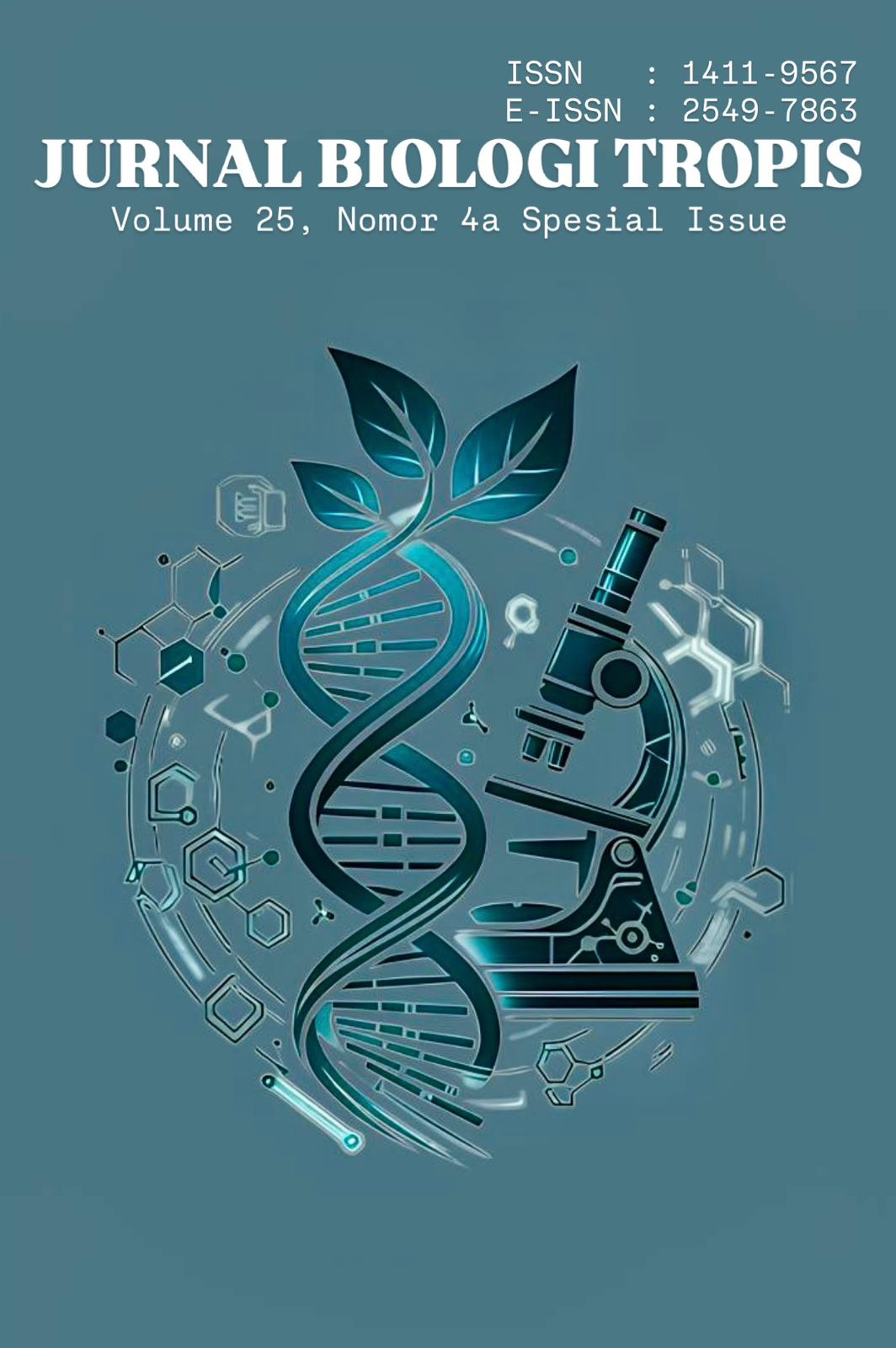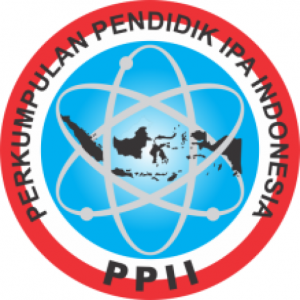Application of pH and TDS Sensors in NFT Hydroponic Systems to Increase the Growth Quantity of Pakcoy (Brassica rapa L.)
Authors
Lastri Pertiwi , Resti Fevria , Vauzia Vauzia , Azwir AnharDOI:
10.29303/jbt.v25i4a.10418Published:
2025-11-06Issue:
Vol. 25 No. 4a (2025): Special IssueKeywords:
Hydroponic, IoT, Pakcoy, Sensor pH and TDS.Articles
Downloads
How to Cite
Downloads
Metrics
Abstract
Pakcoy is a type of vegetable widely used as a staple food or as a complementary dish; however, its production in Indonesia tends to be unstable. This study aimed to improve the growth of pakcoy using an NFT hydroponic system equipped with IoT-based pH and TDS sensors. The research was conducted at Alfi Hydroponik Padang and the Biology Department Laboratory, Faculty of Mathematics and Natural Sciences, Universitas Negeri Padang, from June to September 2025, using a completely randomized design with 2 treatments, each consisting of 9 replications. The data were analyzed using an independent t-test in SPSS at a 5% significance level. The results showed that the use of sensors was significantly more effective than manual methods, with average plant height of 25.889 cm, 19.44 leaves, leaf area of 503.117 cm², fresh weight of 89.224 g, and dry weight of 48.474 g. These results indicate that the application of IoT-based pH and TDS sensors can enhance the growth of pakcoy in a hydroponic system.
References
Agustin, L. A., Priyati, A., & Setiawati, D. A.,(2024). Pengaruh Waktu Pengairan Nutrisi Terhadap Pertumbuhan Tanaman Pakcoy (Brassica rapa L.) Dengan Sistem Hidroponik NFT (Nutrient Film Technique). J-AGENT (Journal of Agricultural Engineering and Technology), 2(2), 142-150. https://journal.unram.ac.id/index.php/agent/article/view/3110
Anhar, A., Advinda, L., & Hariati, D. (2017). Peningkatan Hasil Cabai Merah (Capsicum annum L.) Dengan Penambahan Pupuk Organik Cair Tunica. SEMIRATA 2017 Bidang Mipa, 5(3), 2254–2560. https://share.google/NqoivAJjUl6G1rhXZ
Anzila, S. M., & Asngad, A. (2022). Efektivitas kombinasi poc bonggol pisang dan daun kelor terhadap pertumbuhan dan produktivit tanaman sawi pakcoy (Brassica rapa L.) dengan metode hidroponik.Bio-Lectura:Jurnal Pendidikan Biologi,9(2), 168-178. https://doi.org/10.31849/bl.v9i2.10754
Aprilia, D. S., Fevria, R., Vauzia., Advinda,L. (2022). The Effect Of Ecoenzyme Spraying On The Number Of Leaves Of Spinach (Amaranthus hybridus L.)Cultivated Hydroponically. Serambi biologi,7(3):235-238.
Badan Pusat Statistik. 2024. Jumlah Konsumsi dan Produksi Bayam. Bidang Pertanian Hortikultura. Jakarta: BPS – Statistics Indonesia. Badan Pusat Statistik. bps.go.id
Fevria, R., dkk. 2021. Comparison of Nutritional Content of Spinach (Amaranthus gangeticus L.) Cultivated Hydroponically and Non-Hidroponically. Eksakta: Ilmiah Bidang MIPA(E-ISSN: 2549-7464). 22(1), 46-53.
Fevria, R., Aliciafarma, S., Vauzia, & Edwin.
(2021). Comparison of Nutritional Content
of Water Spinach (Ipomoea aquatica)
Cultivated Hydroponically and Non-
Hydroponically. Journal of Physics:
Conference Series, 1940(1), 012049.
http://dx.doi.org/10.1088/1742-
/1940/1/012049
Fevria, R., Vauzia, V., Farma, S. A., & Edwin, E. (2023, May). The Effect of Eco-Enzyme Spraying on Chlorophyll Content of Hydroponic Spinach (Amaranthus sp.). In 3rd International Conference on Biology, Science and Education (IcoBioSE 2021) (pp. 127-132). Atlantis Press. DOI: 10.2991/978-94-6463-166-1_19
Fevria, R., Razak, A., Heldi, N. S., Kamal, E., & Edwin. (2023). Application of Nanotechnology Liquid Organic Fertilizer in Sustainable Hydroponic Cultivation for Urban Food Security. Science & Technology Asia, 28(4), 295–304. doi:10.14456/scitechasia.2023.89
Mansyur, N. I., Pudjiwati, E. H., & Murtilaksono, A. (2021). Pupuk dan pemupukan. Syiah Kuala University Press.
Masluki., Naim, M., & Mutmainnah. 2015. Pemanfaatan pupuk organik cair (POC) pada lahan sawah melalui sistem mina padi. Prosiding Seminar Nasional. 2(1): 866-896.
Nugroho, M. A., & Rivai, M. (2019). Sistem Kontrol dan Monitoring Kadar Amonia untuk Budidaya Ikan yang Diimplementasi pada Raspberry Pi 3B. Jurnal Teknik ITS, 7(2), A374-A379.
Novriani, Dora Fatma Nurshanti, Ardi Asroh, Al asri. 2019. Pemanfaatan Daun Gamal Sebagai Pupuk Organik Cair Untuk Meningkatkan Pertumbuhan dan Produksi Tanaman Pakcoy(Brassica rapaL.). Jurnal Fakultas Pertanian Universitas Baturaja. https://doi.org/10.32502/jk.v14i1.1843
Oktavia, P., Putri, U. D., Donza, F. F., & Fevria, R. (2024, November). Pengaruh Konsentrasi Nutrisi AB Mix terhadap Tinggi Tanaman, Jumlah Daun, dan Hasil Panen Selada (Lactuca sativa L.) dengan menggunakan Sistem Sumbu. In Prosiding Seminar Nasional Biologi (Vol. 4, No. 1, pp. 595-602).
Oktaviani, M., Fevria, R., Vauzia, A., & Razak, A. (2025). The Effect of NPK Based Sensors on Hydroponic Growth of Caisim Plants (Brassica Chinensis var. Parachinensis). Jurnal Biologi Tropis, 25(2), 1426–1432. https://doi.org/10.29303/jbt.v25i2.8837
Oktavia, P., Fevria, R., Vauzia, A., Razak, A., & Yulkifli. (2025). Effect of Sensor and Based NPK on The Growth of Red Spinach (Amaranthus tricolor L.) Cultivated Hydroponic. Jurnal Biologi Tropis, 25(1), 750–756. https://doi.org/10.29303/jbt.v25i1.8328
Purba, T., Ningsih, H., Purwaningsih, P., Junaedi, A. S., Gunawan, B., Junairiah, J., ... & Arsi, A. (2021). Tanah dan nutrisi tanaman. Yayasan Kita Menulis.https://share.google/V6udRp8wzKvmn7gcS
Razak, A. (2021). Ekonanobioteknologi: Konsep pendekatan pengembangan bidang kajian zoologi dan ekologi hewan. Padang: Universitas Negeri Padang Repository.
Rambe, M. Y. (2013). Penggunaan Pupuk Kandang Ayam dan Pupuk Urea Terhadap Pertumbuhan dan Hasil Tanaman Selada (Lactuca sativa L.) di Media Gambut. Universitas Islam Negeri Sultan Syarif Kasim Riau Pekanbaru.
Rivana, R. R., Made, M. R., & Jaenudin, J. (2023). Sistem Monitoring Nutrisi dan PH Air pada Tanaman Hidroponik Berbasis Internet Of Things (IoT). Jurnal Elektronika Otomasi Industri, 10(3).Setiawan, H. 2017. Kiat Sukses Budidaya Cabai Hidroponik. Yogyakarta: Bio Genesis
Sania, H., Fevria, R., Vauzia, A., & Razak, A. (2025). Effect of Sensor and Based NPK on the Growth of Pakcoy (Brassica rapa L.) Cultivation Hydroponic. Jurnal Biologi Tropis, 25(1), 807–813. https://doi.org/10.29303/jbt.v25i1.8514
Suarsana, M., Parmila, P.I., & Gunawan, A. K. (2019). Pengaruh Konsentrasi Nutrisi AB Mix Terhadap Pertumbuhan Dan Hasil Sawi Pakcoy (Brassica rapa L.) Dengan Hidroponik Sistem Sumbu (Wick System). Agricultural Journal, 2(2), 98-105. DOI 10.37637/ab.v2i2.393.
Suleman, R., Kandowangko, N. Y., Abdul, A. (2019). Karakterisasi Morfologi Dan Analisis Proksimat Jagung (Zea Mays, L.) Varietas Momala Gorontalo. Jambura Edu Biosfer Journal,1(2);72-81.
Tazri, M. I., Fevria, R., Vauzia, V., & Razak, A. (2025). Effect of Nanobubble Technology Gamal Leaf POC on Pakcoy (Brassica rapa L.) Quality in Hydroponic. Jurnal Biologi Tropis, 25(2), 1446-1451.DOI: 10.29303/jbt.v25i2.8829
Vauzia, V., Fevria, R., & Wijaya, Y. T. (2019). Chlorophyll Content of Jabon Leaves (Anthocephalus cadamba[Roxb] Miq.) in the Sungai Nyalo, Pesisir Selatan and Lubuk Alung, Padang Pariaman. Bioscience, 3(2), 155. DOI:10.29133/yyutbd.1217359
Vivonda, T., & Yoseva, S. (2016). Optimalisasi Pertumbuhan Dan Produksi Tanaman Pakcoy (Brassicca Rapal) Melalui Aplikasi Beberapa Dosis Pupuk Bokashi (Doctoral dissertation, Riau University).
License
Copyright (c) 2025 Lastri Pertiwi, Resti Fevria, Vauzia Vauzia, Azwir Anhar

This work is licensed under a Creative Commons Attribution 4.0 International License.

Jurnal Biologi Tropis is licensed under a Creative Commons Attribution 4.0 International License.
The copyright of the received article shall be assigned to the author as the owner of the paper. The intended copyright includes the right to publish the article in various forms (including reprints). The journal maintains the publishing rights to the published articles.
Authors are permitted to disseminate published articles by sharing the link/DOI of the article at the journal. Authors are allowed to use their articles for any legal purposes deemed necessary without written permission from the journal with an acknowledgment of initial publication to this journal.


























